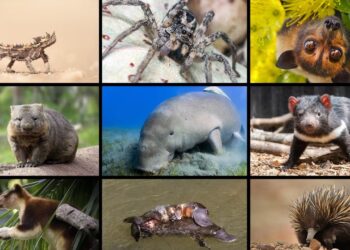The numbers speak for themselves: There are billions of cattle, sheep, pigs and chickens in the world, each taking up a lot of space.
The fundamental question of how much space is available for both humans and animals on Earth is of crucial importance in the current era, characterized by humanity’s significant impact on the environment. The coexistence of human and wild animal communities is a topic of great interest, given the ongoing conflict between them.
Given the current situation, it is clear that the Anthropocene, the geological era in which human impact on the environment is increasingly evident, has led to serious conflict between human societies and wild animals. Since the emergence of humanity on Earth, the biosphere has been subjected to continuous extinctions that not only impoverish ecosystems but also profoundly alter natural environments.
The modern era, with its industrialization and intense exploitation of natural resources, has reduced the space available for wild animals. The growth of cities, deforestation, and expansion of agricultural activities have led to the decline of many animal species. For example, in Europe, most farmland is devoted to livestock grazing, while many natural areas are home to farm animals. This expansion of agricultural activities has a significant impact on the availability of space for wild animals.
The numbers speak for themselves: There are billions of cattle, sheep, pigs and chickens in the world, each taking up a lot of space. This phenomenon has led to a significant reduction in the living space of wild animals, which often find themselves sharing territory with human settlements, increasing conflicts and risks for both parties.
Biodiversity loss and climate change are other factors affecting the availability of space for wild species. Rapidly changing environmental and climate conditions can reduce natural habitats and force species to search for new areas.
Moreover, human presence is widespread across the planet, with roads, infrastructure, and urbanization occupying vast spaces. Land transportation, for example, requires vast amounts of space, with billions of cars, trucks, trains, and planes occupying land and contributing to the expansion of cities.
Pollution is another serious problem that threatens coexistence between humans and wild animals. Air, water and soil pollution can poison and alter natural habitats, endangering the survival of species.
The fight against invasive alien species and climate change represent additional threats. Invasive species can compete with native species for resources, while climate change can alter natural environments, putting many species at risk.
However, there are solutions that can promote peaceful coexistence between humans and wild animals. Establishing protected areas, restoring degraded areas, protecting endangered species, and supporting sustainable agricultural practices are all approaches that can help improve the situation.

“Infuriatingly humble alcohol fanatic. Unapologetic beer practitioner. Analyst.”















Leave a Reply